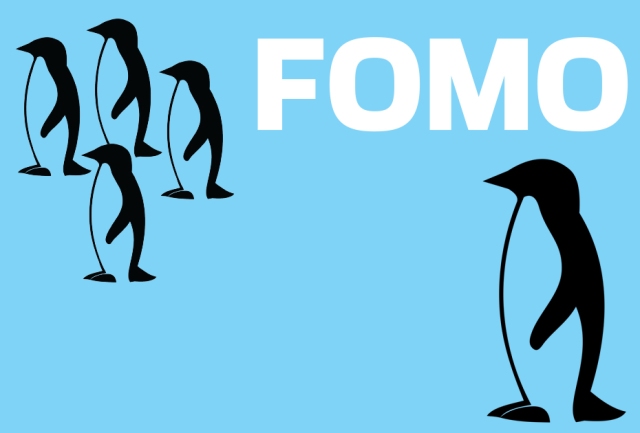 By Emily Abagis
By Emily Abagis
While trying to write my blog assignment for my CBUS 111 class at McGill, I casually open Facebook for the 47th time during that hour. I’m scrolling through, looking at picture after picture; Mikes hiking adventure, Stephanie’s trip to Greece, Sarah’s Bachelorette party extravaganza…all of a sudden, this feeling starts creeping up inside me and it’s something I have definitely felt before. I keep scrolling and it hits me! I have a sudden need to take part in this conversation, I too need to be included and validated through my “fun” and “cool” Facebook adventures. I quickly sift through the hundreds of photos I have taken on my iPhone over the last year to find one deemed post worthy. I come across the most epic throw back pictures of an over the top 10 course meal I had at Au Pied de Cochon Cabane a Sucre this past fall. So many to choose from, so I sent one out into the social universe and hoped for more likes than ever before. Then I sent another, then another after that…. Someone pay attention before my entire photo stream finds its way online…
Sound familiar?
This, my friends, is a classic example of FOMO – Fear Of Missing Out
Because of my fear of missing out, I made an impulsive decision to post a photo that had no relevance to my personal brand or what I was doing in that exact moment. As a result, my attempts for attention came off as inauthentic and irrelevant, not to mention, the photo did not provide me with the results I had desired. People indulge in this kind of behavior all the time: impulse posts (like mine), impulse purchases and impulse decisions are just some of the things we do that lack proper premeditation and could leave us with an outcome we had not hoped for. Marketers and companies are also falling victim to the FOMO but in a different way – through impulse content creation. Big companies are trying now more than ever to stay relevant and release content into the world that will give them a profitable return. Much like I was demonstrating earlier with my eager social media posts, are pumping out continuous content hoping to get a result that will mean something to them.
They worry that by not keeping up, they have already fallen behind and the greater fear is that they will be missing out on valuable content market share. Unfortunately without a vision and long-term strategy, the FOMO will set in and marketers will produce content at a quicker and more abundant rate. This will result in a lack of quality and legitimacy making it very hard for the content to be measured and even succeed. Mark Schaefer, globally renowned marketing influencer and strategist advocates for credible, quality content and the importance of letting go of the fear in your writing to gain authenticity – this is how you will get the most out of the content you release.
Quality vs. Quantity
The formula many marketers use lacks foresight. Their mandate is to push out content as frequently as possible just to have something available at all times. In fact, “80 percent [of content marketers] plan to increase the amount they produce in the coming 12 months.” Because there is so much amazing content available out there already, these types of mass pushes tend to fail and cheapen the product. This results in low, to non-existent viewership, which I’m sure was not their end goal. Mark argues that quality is based on credibility and solid research. The oversaturation of available content means that those consuming it will be looking for something more in order to get engaged. Viewers find content most valuable when evidence-based and as a result “75 percent have become more selective about the content they consume.” When the content is not only compelling but relevant, well thought out, strategized and above all factual, “7/10 will consume more from that same source; 76 percent are influenced in their purchasing decisions [by that content and] 67 percent would be willing to advocate for that brand.”
Authenticity
Creating compelling content is to be unafraid, be unapologetically yourself and better. Mark believes that creating with a lack of fear is proven to generate more engagement amongst viewers. He based himself on an analysis done by Buzz Sumo on content that gets the most visibility through links and shares. These top posts have a lot in common as they use a fearless voice to convey authority, strength, insights and originality. “Content that is bold, takes a stand, and goes against the grain makes a difference. When you are unafraid to say what is in your heart and mind, and you say it in a professional and caring way, that establishes you as a true thought leader.” In turn, content that is created without fear is the most authentic content you will ever produce.
We as marketers and a society can give in to our constant FOMO and generate content that lacks purpose and strategy OR, we can take a step back, look at the bigger picture and create good content that is well researched, authentic and will keep people coming back for more – you decide.
Sources:
https://www.businessesgrow.com/2016/10/04/content-marketing-fomo/
https://www.businessesgrow.com/2016/09/28/b2b-content/
https://www.businessesgrow.com/2016/10/24/crap-content
Hill+Knowlton Study – Thought Leadership Disrupted: New Rules for the Content Age
Buzz Sumo Study – The magical content that gets links and shares
Image: http://themash.com/blog/news/2014/09/11/fomo-momo-making-feel-friendless/

Great post Emily! I also chose Mark. Think I will use his tips and insights daily. /Christina/
LikeLike
Hey Emily! I also chose Mark for the similar reasons… Quality not quantity! I like how you’ve listed your references in the bottom! good journalism 🙂
LikeLike
Enjoyed your post….using your words, the post was compelling but relevant and well thought out.
LikeLike